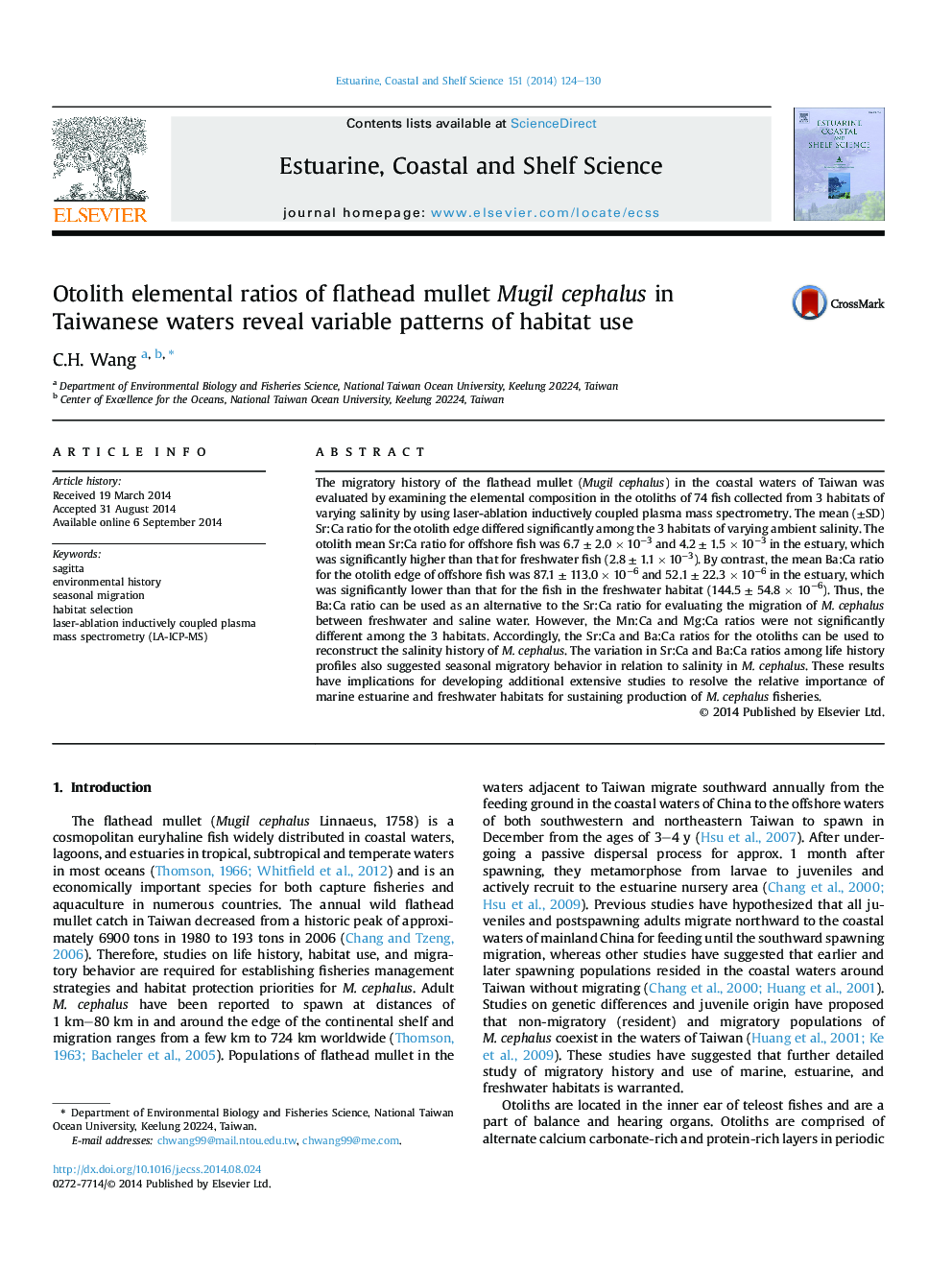| Article ID | Journal | Published Year | Pages | File Type |
|---|---|---|---|---|
| 6384792 | Estuarine, Coastal and Shelf Science | 2014 | 7 Pages |
Abstract
The migratory history of the flathead mullet (Mugil cephalus) in the coastal waters of Taiwan was evaluated by examining the elemental composition in the otoliths of 74 fish collected from 3 habitats of varying salinity by using laser-ablation inductively coupled plasma mass spectrometry. The mean (±SD) Sr:Ca ratio for the otolith edge differed significantly among the 3 habitats of varying ambient salinity. The otolith mean Sr:Ca ratio for offshore fish was 6.7 ± 2.0 Ã 10â3 and 4.2 ± 1.5 Ã 10â3 in the estuary, which was significantly higher than that for freshwater fish (2.8 ± 1.1 Ã 10â3). By contrast, the mean Ba:Ca ratio for the otolith edge of offshore fish was 87.1 ± 113.0 Ã 10â6 and 52.1 ± 22.3 Ã 10â6 in the estuary, which was significantly lower than that for the fish in the freshwater habitat (144.5 ± 54.8 Ã 10â6). Thus, the Ba:Ca ratio can be used as an alternative to the Sr:Ca ratio for evaluating the migration of M. cephalus between freshwater and saline water. However, the Mn:Ca and Mg:Ca ratios were not significantly different among the 3 habitats. Accordingly, the Sr:Ca and Ba:Ca ratios for the otoliths can be used to reconstruct the salinity history of M. cephalus. The variation in Sr:Ca and Ba:Ca ratios among life history profiles also suggested seasonal migratory behavior in relation to salinity in M. cephalus. These results have implications for developing additional extensive studies to resolve the relative importance of marine estuarine and freshwater habitats for sustaining production of M. cephalus fisheries.
Related Topics
Physical Sciences and Engineering
Earth and Planetary Sciences
Geology
Authors
C.H. Wang,
